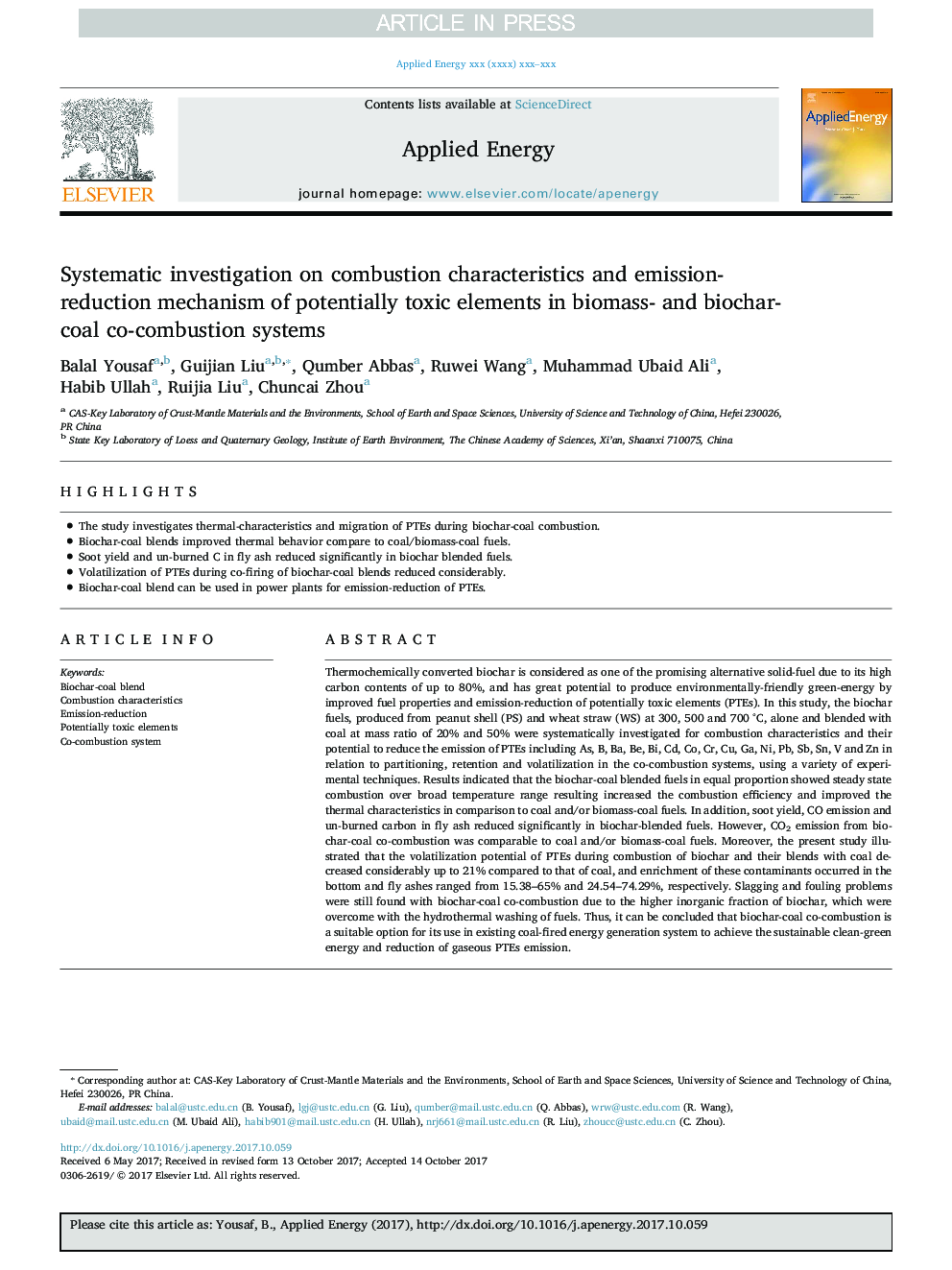| کد مقاله | کد نشریه | سال انتشار | مقاله انگلیسی | نسخه تمام متن |
|---|---|---|---|---|
| 6681635 | 1428082 | 2017 | 16 صفحه PDF | دانلود رایگان |
عنوان انگلیسی مقاله ISI
Systematic investigation on combustion characteristics and emission-reduction mechanism of potentially toxic elements in biomass- and biochar-coal co-combustion systems
ترجمه فارسی عنوان
بررسی های سیستماتیک بر ویژگی های احتراق و مکانیزم کاهش انتشارات عناصر بالقوه سمی در سیستم های احتراق زیست توده و زغال سنگ زغال سنگ
دانلود مقاله + سفارش ترجمه
دانلود مقاله ISI انگلیسی
رایگان برای ایرانیان
کلمات کلیدی
ترکیب زغال سنگ زغال سنگ، ویژگی های احتراق کاهش میزان انتشار، عناصر بالقوه سمی، سیستم احتراق
موضوعات مرتبط
مهندسی و علوم پایه
مهندسی انرژی
مهندسی انرژی و فناوری های برق
چکیده انگلیسی
Thermochemically converted biochar is considered as one of the promising alternative solid-fuel due to its high carbon contents of up to 80%, and has great potential to produce environmentally-friendly green-energy by improved fuel properties and emission-reduction of potentially toxic elements (PTEs). In this study, the biochar fuels, produced from peanut shell (PS) and wheat straw (WS) at 300, 500 and 700 °C, alone and blended with coal at mass ratio of 20% and 50% were systematically investigated for combustion characteristics and their potential to reduce the emission of PTEs including As, B, Ba, Be, Bi, Cd, Co, Cr, Cu, Ga, Ni, Pb, Sb, Sn, V and Zn in relation to partitioning, retention and volatilization in the co-combustion systems, using a variety of experimental techniques. Results indicated that the biochar-coal blended fuels in equal proportion showed steady state combustion over broad temperature range resulting increased the combustion efficiency and improved the thermal characteristics in comparison to coal and/or biomass-coal fuels. In addition, soot yield, CO emission and un-burned carbon in fly ash reduced significantly in biochar-blended fuels. However, CO2 emission from biochar-coal co-combustion was comparable to coal and/or biomass-coal fuels. Moreover, the present study illustrated that the volatilization potential of PTEs during combustion of biochar and their blends with coal decreased considerably up to 21% compared to that of coal, and enrichment of these contaminants occurred in the bottom and fly ashes ranged from 15.38-65% and 24.54-74.29%, respectively. Slagging and fouling problems were still found with biochar-coal co-combustion due to the higher inorganic fraction of biochar, which were overcome with the hydrothermal washing of fuels. Thus, it can be concluded that biochar-coal co-combustion is a suitable option for its use in existing coal-fired energy generation system to achieve the sustainable clean-green energy and reduction of gaseous PTEs emission.
ناشر
Database: Elsevier - ScienceDirect (ساینس دایرکت)
Journal: Applied Energy - Volume 208, 15 December 2017, Pages 142-157
Journal: Applied Energy - Volume 208, 15 December 2017, Pages 142-157
نویسندگان
Balal Yousaf, Guijian Liu, Qumber Abbas, Ruwei Wang, Muhammad Ubaid Ali, Habib Ullah, Ruijia Liu, Chuncai Zhou,
